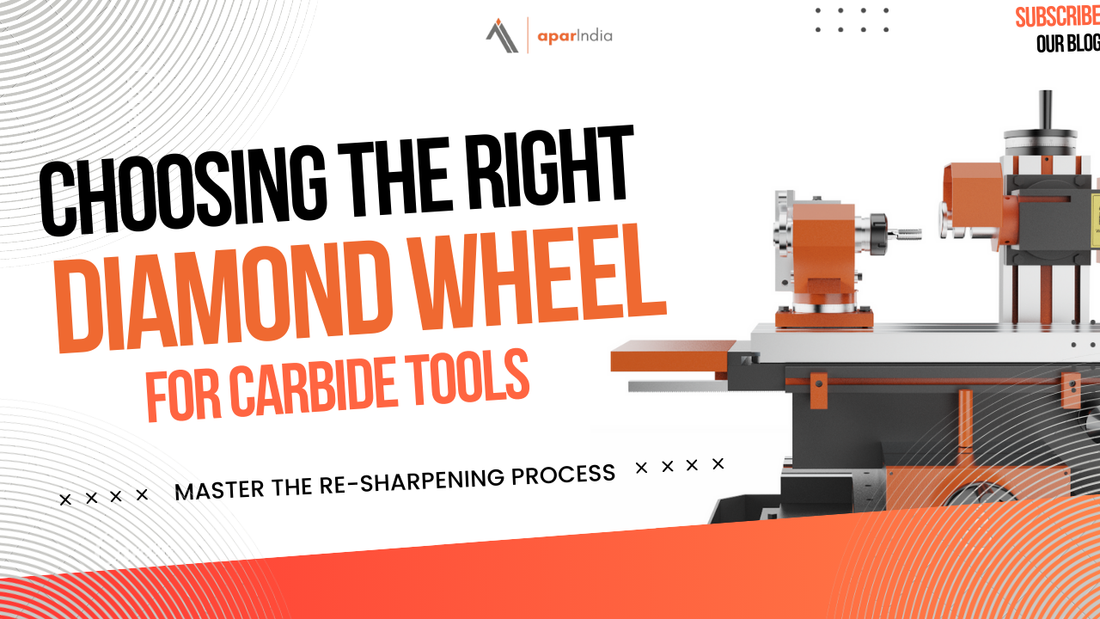
How to Select the Right Diamond Wheel for Your Carbide Tools: A Precision Guide for High-Performance Grinding
Share
In the world of high precision manufacturing, the performance of carbide tools plays a critical role in determining the quality of the final product. Whether you're operating milling machines, drill and cutter grinders, or advanced tool and cutter grinding machines, one key factor stands out—the diamond grinding wheel. Choosing the right diamond wheel isn't only about compatibility; it's about optimizing performance, extending tool life, and achieving consistent precision machining results.
Here’s a detailed guide to help manufacturers, tool grinders, and machinists select the most suitable diamond wheel for carbide tools.
The Story of a Worn-Out End Mill
In a tool room producing components for aerospace applications, machines operate efficiently, precision tools are calibrated, and workflows are smooth. However, one recurring issue disrupts progress—carbide end mills lose their sharpness too quickly. Frequent regrinding leads to inconsistent results, and quality benchmarks are not being met.
Upon investigation, the problem was traced back to an unsuitable diamond grinding wheel.
This scenario is common in facilities using tool and cutter grinders. Understanding the essential elements of diamond wheels can make a substantial difference in tool performance and final product quality.
Key Factors in Selecting the Right Diamond Wheel for Carbide Tools
1. Wheel Shape
Each tool geometry requires a specific wheel profile.
-
1A1 (Straight Wheel): Suitable for surface and peripheral grinding of flat tools.
-
11V9 (Cup Wheel): Commonly used for regrinding fluted tools like end mills and drills.
-
6A2 (Dish Wheel): Best for sharpening angles with concave profiles.
The right shape ensures proper contact, reduced heat buildup, and effective stock removal.
2. Grit Size
-
Fine Grit (D6-D46): Provides smooth finishes, ideal for final sharpening.
-
Medium Grit (D64-D91): Balances material removal and surface quality.
-
Coarse Grit (D126-D181): Best for heavy regrinding or reshaping worn tools.
Grit size should align with your objective—surface finish or faster material removal.
3. Bond Type
The bonding material holds the diamond grit and affects heat resistance, wear rate, and cutting efficiency.
-
Resin Bond: Offers good cutting action and lower heat, suitable for most carbide grinding.
-
Metal Bond: Highly durable, designed for long runs and heavy use.
-
Vitrified Bond: Delivers high rigidity and thermal resistance, often used in high-precision applications.
Resin bond wheels are a practical choice for most tool and cutter grinding applications due to their versatility.
Application Matching
After switching from a general-purpose straight wheel to a specialized cup wheel with a finer grit and resin bond, the tool room experienced noticeable improvements. Edges stayed sharper, tool life increased, and productivity improved.
This simple change had a measurable impact on performance and efficiency.
Practical Tips
-
Ensure compatibility between the wheel and the grinding machine.
-
Choose grit and bond based on the material removal rate and surface finish needs.
-
Monitor wheel wear regularly.
-
Always balance the wheel before use to avoid vibration and uneven wear.
-
Use appropriate coolant depending on the grinding operation.
Final Thoughts
In precision manufacturing, the choice of diamond wheel is crucial to achieving consistent quality and optimal tool performance. Shape, grit size, and bond type each play an important role in tool sharpening and grinding processes. Whether you’re maintaining used tools or manufacturing new ones, the right diamond wheel will enhance your capabilities and contribute to smoother operations across your grinding setup.
